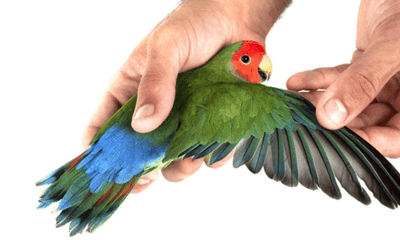Animals may not speak our language, but they are always communicating. Learning to interpret your pet’s body language can help you strengthen your bond, prevent behavioural issues, and better care for their wellbeing. Whether you’re a dog owner, cat lover, or keep a variety of pets, understanding their non-verbal cues is key to building trust and recognising their needs.
In this blog, we’ll break down the key signs to look for in dogs, cats, and other common pets to help you become fluent in the silent language of animals.
Why Pet Body Language Matters
Animals rely on body language far more than humans do. While they may bark, meow, or chirp, most of their emotions and intentions are conveyed through posture, facial expressions, tail movement, and more. Reading these signs correctly can help you:
-
Detect stress, anxiety, or discomfort early
-
Prevent aggressive situations or fear-based behaviour
-
Enhance training and socialisation
-
Strengthen the bond with your pet
When you know what your pet is really feeling, you can respond appropriately and support their emotional and physical health.
Dog Body Language: Ears, Tail, and More
Dogs are generally expressive animals, but many of their signals are subtle. Here’s what to watch for:
1. Tail Position and Movement
-
High and wagging: Excited, alert, or confident
-
Low and tucked: Nervous, scared, or submissive
-
Slow wag: Curious or unsure
-
Stiff, upright tail: Possible aggression or dominance
2. Ears
-
Erect and facing forward: Focused or alert
-
Laid back or flat: Submissive or fearful
-
One ear up, one down: Uncertain or curious
3. Posture
-
Relaxed body, open mouth: Content and calm
-
Rigid stance, head high: Alert or possibly threatened
-
Cowering or shrinking back: Scared or anxious
4. Other Signs
-
Yawning or lip licking (in non-sleepy settings): Anxiety or stress
-
Excessive panting: Heat, stress, or pain
-
Tail chasing or pacing: Boredom or anxiety
Cat Body Language: Subtle but Telling
Cats can be harder to read than dogs, but their body language is just as informative. A cat’s mood can change quickly, so paying attention to the details matters.
1. Tail
-
Upright with a soft curve: Friendly and happy
-
Puffed up: Fearful or agitated
-
Twitching or swishing: Irritated or hunting mode
-
Tucked under: Nervous or submissive
2. Eyes and Ears
-
Slow blinking: Trust and affection
-
Dilated pupils: Excitement, fear, or overstimulation
-
Pinned back ears: Angry, anxious, or overstimulated
-
Ears forward: Interested or curious
3. Body Posture
-
Curled up: Relaxed and safe
-
Arched back and puffed tail: Frightened or defensive
-
Flat body, ears back: Preparing to flee or fight
4. Vocalisations
While technically not body language, sound complements movement. A hiss, growl, or low yowl signals discomfort, whereas purring and chirping often (but not always) indicate contentment.
Small Animals and Other Pets
While dogs and cats are the most common pets, many households include rabbits, guinea pigs, birds, reptiles, or even ferrets. Each has its own language.
Rabbits
-
Thumping back legs: Alarm or fear
-
Lying on side (flopped): Content and relaxed
-
Grinding teeth (softly): Happy
-
Grinding teeth (loudly): Pain
Birds
-
Fluffed feathers: Cold, relaxed, or sick
-
Head bobbing: Seeking attention or food
-
Tail fanning or pinning eyes: Excitement or aggression
-
Feather plucking: Boredom or stress
Guinea Pigs
-
Popcorning (jumping): Happy and energetic
-
Chattering teeth: Annoyed or warning
-
Freezing in place: Frightened
Reptiles
-
Hissing: Threatened or uncomfortable
-
Gaping mouth: Stress, temperature regulation, or aggression
-
Lethargy or hiding: Could be normal or a sign of illness
The key is to know what’s normal for your pet’s species, and your pet individually.
Signs Your Pet Might Be Stressed
Stress in pets can manifest through both behaviour and body language. Common indicators across species include:
-
Excessive grooming or licking
-
Loss of appetite
-
Hiding or avoiding interaction
-
Pacing, restlessness, or destructive behaviour
-
Increased vocalisations
-
Changes in toileting habits
Identifying these signs early can help you take action before stress escalates into health or behavioural issues.
How to Respond to Body Language Cues
Reading your pet’s body language is only the first step, how you respond can have a lasting impact on their emotional wellbeing. When your pet displays signs of fear or stress, such as tucked tails, trembling, or hiding, it’s important to remove them from the situation or provide a safe retreat. Creating a designated quiet space can help them feel secure and allow them to decompress.
If your pet growls, hisses, or shows other warning signals, avoid punishing them. These behaviours are valuable communication tools, not signs of disobedience. Instead, work on identifying the trigger and use positive reinforcement to desensitise them over time. Calming aids like Feliway Diffusers for cats and Adaptil sprays or diffusers for dogs can be very effective in easing anxiety and helping your pet feel more comfortable in their environment.
Boredom and lack of stimulation are common causes of behavioural issues, which may show up as destructive chewing, digging, or restlessness. Enrichment is key, interactive products like the LickiMat range can help soothe pets through repetitive licking, which releases endorphins and provides a calming effect. KONG enrichment toys are another excellent option, especially for dogs. When filled with treats or pastes, they offer long-lasting mental engagement and help redirect energy in a positive way.
If your pet is exhibiting stress-related behaviours such as inappropriate urination or marking, products like Urine Off Spray can support training efforts while also neutralising odours and deterring repeat incidents. Used alongside behavioural support tools, these products help you respond effectively to what your pet is trying to communicate, creating a calmer, more harmonious home for everyone.
Learn Their Language, Strengthen Your Bond
Understanding your pet’s body language is one of the most valuable tools you can have as a pet owner. It allows you to see the world through their eyes, respond to their needs, and build a deeper relationship based on trust and empathy. With the right knowledge and tools, you can create a safer, happier, and more harmonious home for all your furry, feathered, or scaly companions.
Ready to enhance your pet communication skills? Visit us in-store or browse our range of enrichment and calming products online to support your pet’s emotional wellbeing today.






